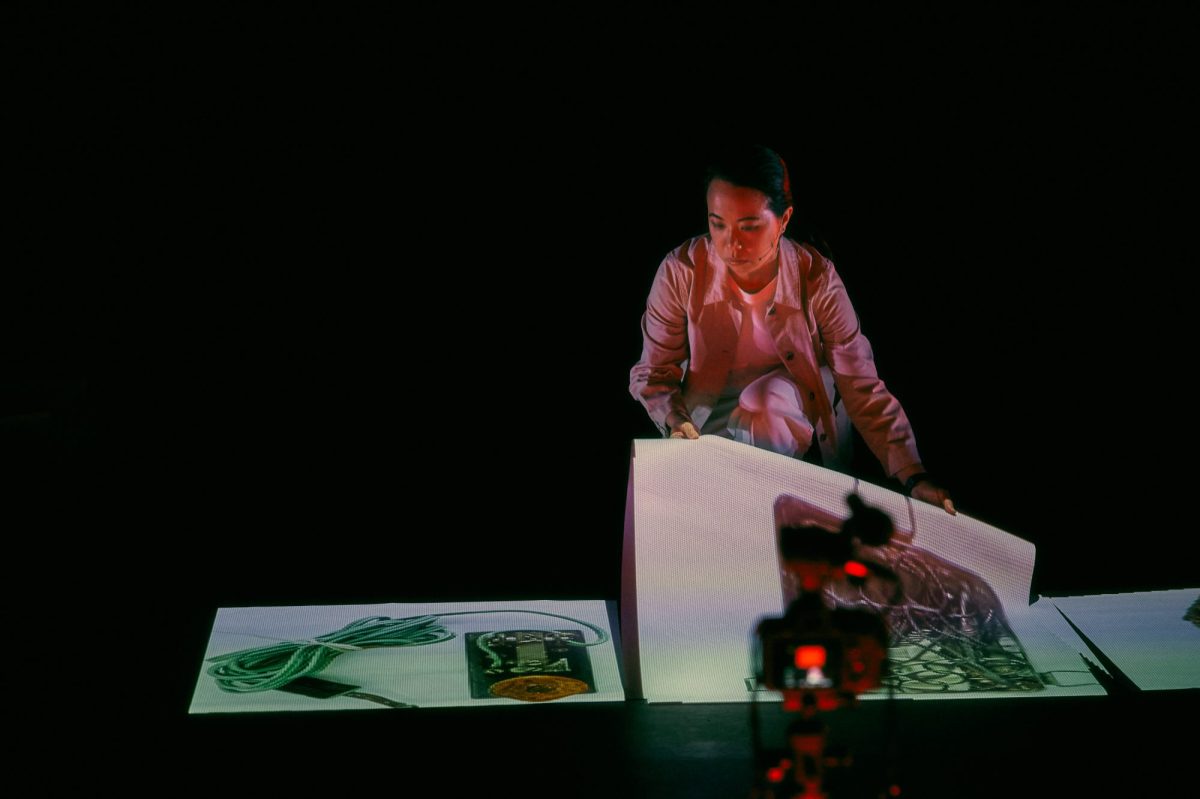Renowned visual artist, Sim Chi Yin’s Australian premiere performance One Day We’ll Understand disrupted the archives to question the role of memory, place and time.
Set against the backdrop of the Malayan Emergency (1948-1960), the performance merged documentary and live storytelling to examine how we grapple with the past and future. Through Chi Yin’s lens – both her life and her camera – we journeyed through her family archive, unearthing traces left in the wake of the anti-colonial war in British Malaya and beyond.
For six decades, the Malayan Emergency remained a suppressed and largely ignored chapter in Chi Yin family’s history. A period of guerrilla warfare, which began in 1948 Malaya (present day Malaysia and Singapore), saw the British colonial government employ military tactics such as mass deportation, civilian ring-fencing measures and defoliants like Agent Orange. In an effort to suppress what was considered to be an insurgency led by the Malayan Communist Party (MCP), British authorities deported to China 30,000 people who were suspected of being communist sympathisers. Among them was Chi Yin’s grandfather, an educator and newspaper editor, who was eventually killed for his socialist politics.
Chi Yin’s artistic journey is deeply familial, inspired by a lone black and white photograph of her late grandfather – an image passed down by her grandmother. In the photo, he stands with hands on hips, a subtle smirk on his face and a camera draped around his neck. After spending over a decade searching the archives, Chi Yin has woven photographs like these – of her family, civilian life in Malaya, deadly warfare – into a 60-minute live multimedia performance, transforming images of the past into recurring motifs. Through these snapshots, she interrogated the reliability of archival materials: can we truly understand history through photographs that capture only a colonialist gaze?
Employing her rigour as a historian and researcher, Chi Yin adopted art historian, Gabrielle Moser’s concept of the ‘disobedient gaze’, challenging colonialism and its imposed readings of photographs to construct a reimagined – or, as she calls it, counter-archive – centred on her grandfather.
She utilised the method of ‘critical fabulation’, coined by literary scholar, Saidiya Hartman to redress historical omissions, filling in the gaps to form a new narrative. This reimagined archive included snippets from interviews with her grandfather’s family and compatriots, documenting their memories through film, photographs and song. Their voices, once lost and forgotten, were revived, forming a unique, transgenerational collage to bridge past and present.
Large, blank sheets of paper lay across the stage floor, occasionally being hoisted into the air to hover in the stillness of the space. Photographs, video, text and light shifted and transformed across these blank canvases, as new memories and archives took shape in real time.
In one poignant scene, the photographs of her grandfather and toddler son (who was named after Chi Yin’s grandfather) appeared on the screen. Slowly, their digital bodies merged – an attempt to unite the dead and the living within the same realm. In silence, the audience was left to contemplate what fragments of the past are passed onto the generations to come. Chi Yin’s generational turmoil and emotional ambivalence was shaped by the lingering effects of war and the unresolved grief over her grandfather’s forgotten legacy.
The haunting live score by percussionist Cheryl Ong offered a powerful additive to Chi Yin’s poetic narration. Her voice travelled with us on this journey of rediscovery, using the space around her with ease. In some scenes, Chi Yin sat like a child, cross-legged, watching the interviews with her elderly relatives on the screen as the audience did. She was in awe of what they said, how they spoke – a child taking in as much as she could before another generation slowly faded away.
Read: Exhibition review: Karl Shoobridge: Etymologies, ArtSpace Teneriffe
One Day We’ll Understand was a flawless, tightly executed show. What began as an autobiographical journey of self-discovery left us with a glimpse into the haunting impact of colonial trauma.
One Day We’ll Understand
Performance Space, Footscray Community Arts Centre
Concept/Performer: Sim Chi Yin
Director: Tamara Saulwick
Video Design: Nick Roux
Percussionist: Cheryl Ong
One Day We’ll Understand was produced by CultureLink Singapore in partnership with Chamber Made.
One Day We’ll Understand was performed as part of Asia TOPA from 27 February – 1 March 2025. A companion work, Chronotopia, a solo exhibition will be held at the Roslyn Smorgon Gallery until 22 March.





